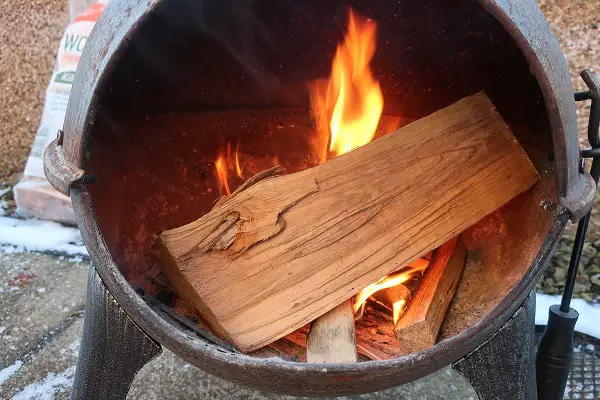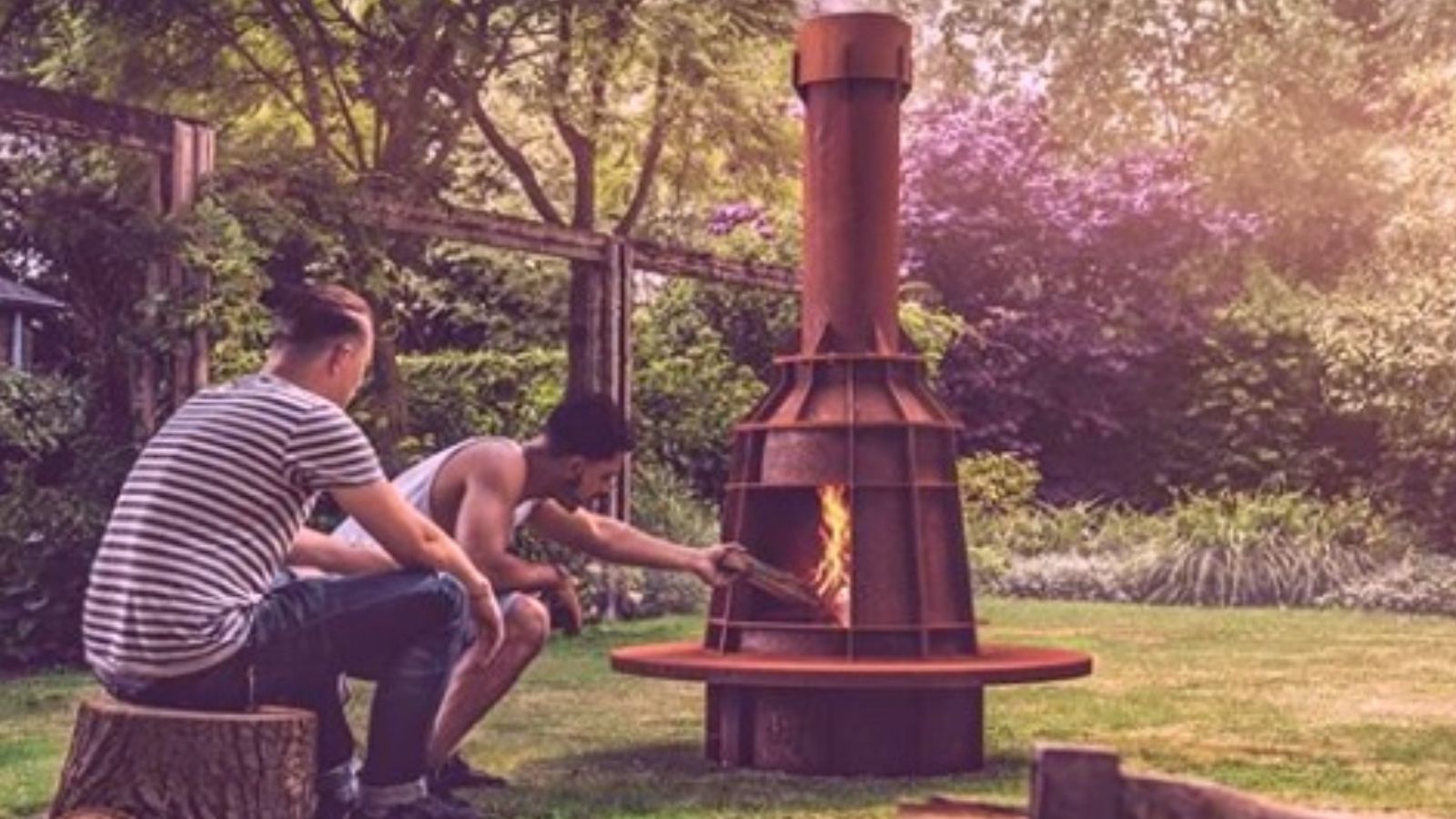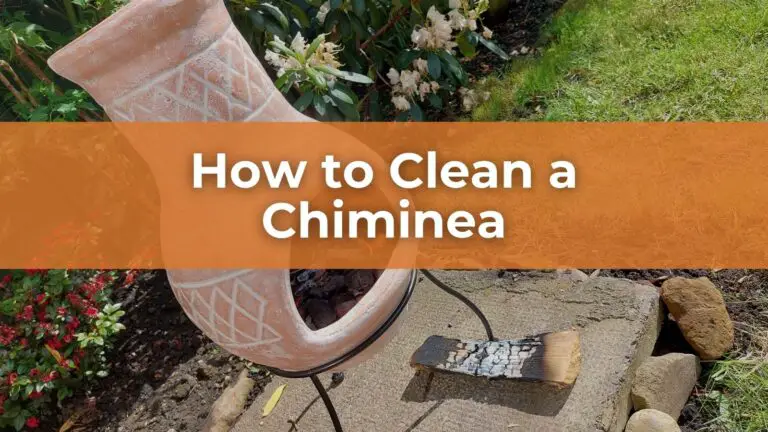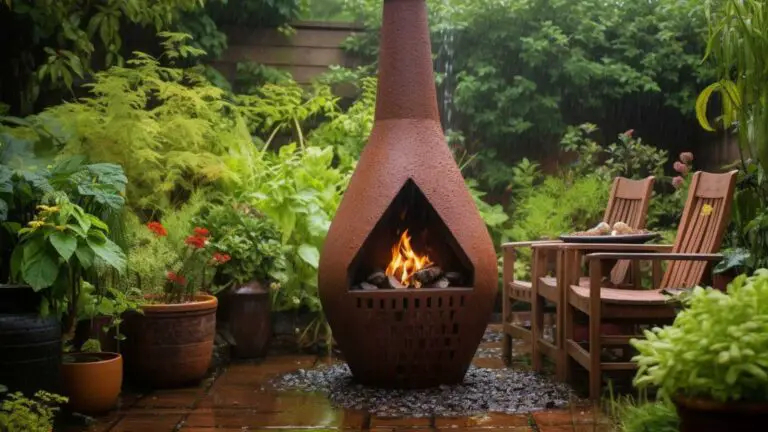What are Chimineas Made From? From Where Did They Originate?
A chiminea is a type of outdoor fireplace or oven. It is typically made from clay or metal, and it has a large opening at the front for burning wood or charcoal. The name “chiminea” is derived from the Spanish word “chimenea,” which means “chimney.”
How exactly do you pronounce chiminea?
Origins of Chimineas/ Chimeneas/ Chimnayas
Chimineas originated in Mexico, where they were used for heating and cooking. They were traditionally made from clay, but over time, other materials, such as metal have become more popular. The clay chimineas were handmade by skilled artisans, and each one was unique. The clay would be shaped into the desired shape and then fired in a kiln to harden it.

Today, chimineas are used for outdoor gatherings and parties, as they provide warmth and a cozy atmosphere.
They are also popular for outdoor cooking, as the heat from the fire can be used to cook food. Some people even use their chimineas as outdoor ovens, baking bread or roasting meat.
In addition to their practical uses, chimineas are also popular for their aesthetic appeal. They come in a variety of styles and designs, and they can add a touch of charm and ambiance to any outdoor space. Whether used for heating, cooking, or simply as a decorative piece, chimineas are a versatile and enjoyable addition to any backyard.
Chimineas are often associated with Mexican culture, but they have become popular in many other parts of the world as well. Their popularity can be attributed to their versatility and practicality, as well as their aesthetic appeal.

In addition to being used for heating and cooking, chimineas can also serve as a focal point for outdoor gatherings and parties. They provide a warm and inviting atmosphere, and they can be a great way to bring people together. Many people enjoy gathering around a chiminea on cool evenings, roasting marshmallows or simply enjoying each other’s company.
READ NEXT: Are Chimineas Good?
Traditional Chimineas
While traditional chimineas were made from clay, modern versions are often made from metal. This makes them more durable and long-lasting, and it allows for a wider range of styles and designs. Metal chimineas can be found in a variety of colors and finishes, from classic black to bright and colorful designs.
Regardless of the material they are made from, chimineas are an enjoyable and practical addition to any outdoor space. They can be used for heating, cooking, or simply as a decorative piece, and they are sure to add a touch of warmth and charm to any backyard or patio.
Why Are Chimineas Made of Metal or Clay?
Chimineas are made from metal or clay because these materials are well-suited for the purpose of an outdoor fireplace or oven. Metal is a durable and long-lasting material, and it can withstand the heat and flames of a fire without breaking or cracking. Clay, on the other hand, is a natural material that is easy to shape and mold into a variety of designs. It is also able to withstand the heat of a fire, although it may require more care and maintenance than a metal chiminea.
Both metal and clay have their own unique advantages and disadvantages. Metal chimineas are typically more durable and long-lasting, but they may not have the same aesthetic appeal as a clay chiminea. Clay chimineas, on the other hand, can be handmade and, therefore may be more unique and artistic, but they may not be as durable as a metal chiminea. Ultimately, the choice of material will depend on the individual’s preferences and needs.
How are Chimineas Made?
Chimineas are typically made from clay or cast iron. The process of making a clay chiminea involves shaping and drying the clay, then firing it in a kiln to harden it. Cast iron chimineas are made by casting molten iron into a mold in the desired shape. After the iron has cooled and solidified, the chiminea is finished by adding any decorative details and a coating to protect the iron from rust.
To make a clay chiminea, the first step is to gather and prepare the clay. This typically involves mixing the clay with water and other materials to create a workable consistency. The clay is then shaped by hand or using a pottery wheel to create the desired shape of the chiminea. Once the clay has been shaped, it is left to dry completely. This can take several days or even weeks, depending on the size and thickness of the clay.
After the clay has dried completely, it is fired in a kiln to harden it. The temperature in the kiln is carefully controlled to ensure that the clay is fired evenly and to the right hardness. This process can also take several days.
Once the clay chiminea has been fired and cooled, it is ready for use. It may be decorated with glazes or other finishes to add color and texture.
Cast iron chimineas are made using a similar process, but instead of shaping the clay by hand, molten iron is poured into a mold in the desired shape of the chiminea. The mold is typically made of sand or other materials that can be easily removed after the iron has cooled and solidified. After the iron has cooled and the mold has been removed, the chiminea is finished by adding any decorative details and a protective coating to prevent rust.
In both cases, the finished chiminea is a durable and decorative outdoor fireplace that can be used for heating and cooking.
How Chimineas Work Explained
A chiminea works by using the laws of physics to create an efficient and effective outdoor fireplace.
When a fire is lit in a chiminea, the heat from the fire is transferred to the clay or cast iron walls of the chiminea. The walls of the chiminea then radiate heat outward, warming the surrounding air. This process is known as conduction, and it is one of the ways that heat is transferred from one object to another.
As the fire burns, the hot air inside the chiminea rises and escapes through the opening at the top of the chiminea. This creates a draft that helps to feed oxygen to the fire and keep it burning. The draft also helps to prevent the buildup of smoke and other pollutants, which can be harmful to both people and the environment.
The chimney-like shape of the chiminea also helps to direct the heat upwards and outwards, maximizing the amount of heat that is radiated into the surrounding air. This is because the chimney-like shape creates a natural convection current that helps to circulate the hot air and distribute the heat more evenly.
Overall, the laws of physics play a crucial role in the design and function of a chiminea, making it an effective and efficient outdoor fireplace.
Need some advice on buying a chiminea? Read my cheat sheet for the best tips.







